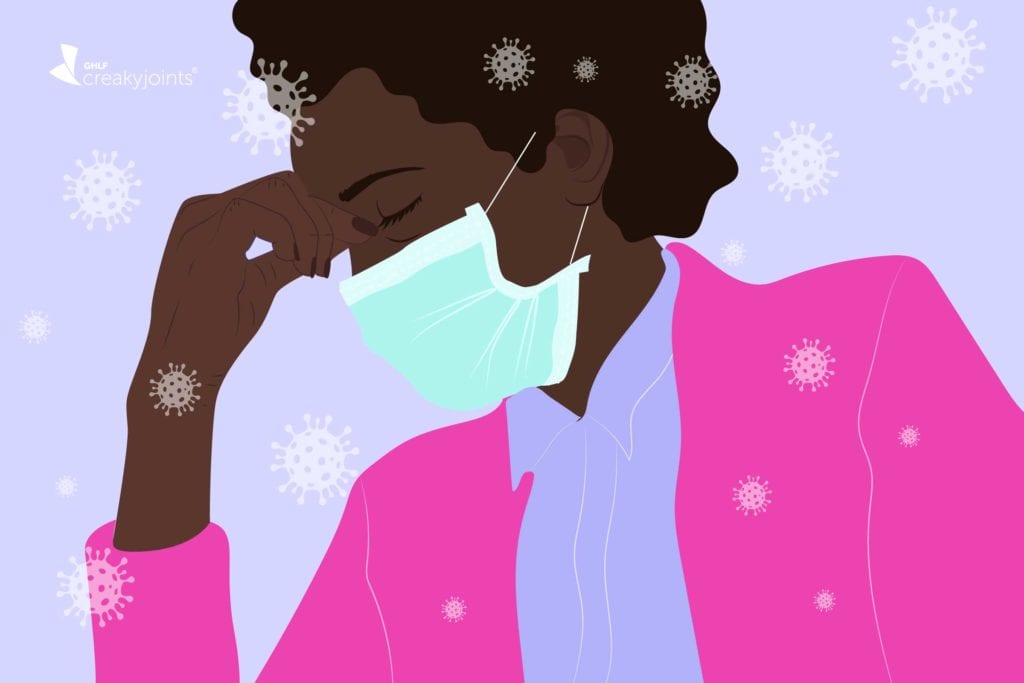Learn more about our FREE COVID-19 Patient Support Program for chronic illness patients and their loved ones.
We’ve been gradually learning more about long COVID since the start of the pandemic. Now, new research sheds light on just how common it is.
One in every eight patients are affected by persistent symptoms after COVID-19, according to a recent study in The Lancet. Researchers asked 76,422 participants to complete questionnaires, administered between March 31, 2020 and August 2, 2021. Of those participants, 5 percent had COVID-19 and were matched to 8,462 controls.
Lingering symptoms in the COVID-19 group at 90 to 150 days after infection (compared with before COVID-19 and compared with matched controls) included the following:
- Ageusia (loss of taste) or anosmia (loss of smell)
- Chest pain
- Difficulties with breathing
- Feeling hot and cold alternately
- General tiredness
- Heavy arms or legs
- Lump in throat
- Pain when breathing
- Painful muscles
- Tingling extremities
These symptoms could be attributed to COVID-19 in 12.7 percent of the patients: 21 percent of COVID-19-positive patients — compared to just 8.7 percent of the COVID-19-negative controls — experienced at least one of the core symptoms substantially increase to moderate severity or greater 90 to 150 days after their COVID-19 diagnosis or a matched time point.
Previous research on long COVID has been hampered by the lack of consensus on how the condition is defined. The prevalence of long COVID symptoms depends on the symptoms, population, and timeframe used to define it, which can vary from four weeks to more than six months (three months is most commonly used).
For instance, a 2021 systematic review in JAMA Network Open examining persistent symptoms after COVID-19 found that 72.5 percent of patients had at least one lingering symptom. In this study, persistent symptoms were defined as those lasting for only 60 days or more after diagnosis, symptom onset, or hospitalization — or at least 30 days after recovery from the acute illness or hospital discharge.
What’s more, like most other studies on long COVID, this study focused on following up with mostly hospitalized patients with COVID-19. The majority of people with COVID-19 have a mild case. Plus, hospitalization itself is associated with physical symptoms.
The researchers of the new study in The Lancet say that, to their knowledge, theirs is the first study to report the nature and prevalence of long COVID — while correcting for individual symptoms present before infection and symptoms in the population without COVID-19 during the pandemic. They are now studying risk factors of long COVID-19, including the potential association between symptoms and COVID-19 severity.
Long-term symptoms of COVID-19 have been described as the next public health disaster in the making. The researchers note that there is a pressing need for data on the scale and scope of the problem to support an adequate health-care response.
“Long COVID is common and disabling, and it comes at high personal costs and high societal costs,” says study author Judith Rosmalen, PhD. “Understanding the core symptoms and the prevalence of post-COVID-19 in the general population represents a major step forward for our ability to design studies that can ultimately inform successful health care responses to the long-term symptoms of COVID-19. Moreover, studies on long COVID might also shed light on persistent symptoms following other infections.”
Long COVID has also been associated with long-term issues like lung disease, diabetes, depression and anxiety, and heart disease. Learn more with our guide to long COVID.
Get Free Coronavirus Support for Chronic Illness Patients
Join the Global Healthy Living Foundation’s free COVID-19 Support Program for chronic illness patients and their families. We will be providing updated information, community support, and other resources tailored specifically to your health and safety. Join now.
Ballering AV, et al. Persistence of somatic symptoms after COVID-19 in the Netherlands: an observational cohort study. The Lancet. August 6, 2022. doi: https://doi.org/10.1016/S0140-6736(22)01214-4.
Nasserie T, et al. Assessment of the Frequency and Variety of Persistent Symptoms Among Patients With COVID-19: A Systematic Review. JAMA Network Open. May 3, 2021. doi: https://doi.org/10.1001/jamanetworkopen.2021.11417.
Interview with study author Judith Rosmalen, PhD.






